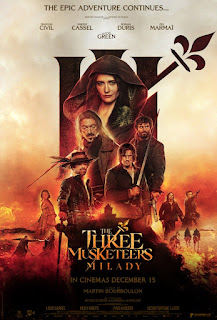I'm starting to catch up with episodes about cinema on Sky Arts from 3DD Productions. This was originally shown in 2018 and may have been lost when we changed our TV box. All the presenters were here as shown in the photo below: Derek Malcolm, Ian Nathan, Steven Armstrong, Neil Norman and Bonnie Greer. As usual for this series, it is a countdown of the best films with dance.
No 25 Silver Linings Playbook from 2012. A young Jennifer Lawrence and Bradley Cooper.
No 24 Strictly Ballroom from 1992. Baz Lurmann's breakthrough movie should be number one.
No 23 Dirty Dancing from 1987. Patrick Swayze showed how a hunk can still dance.
No 22 Bye Bye Birdie from 1963. Ann-Margret starred in that tremendous finale.
No 21 And God Created Woman from 1956. I wondered how this was here until I watched Brigitte Bardot dance.
No 20 The Blues Brothers from 1980. In my top three. Ray Charles plays and sings to "Shake a Tail Feather" and lots of other songs mixed in, with the boys and an amazing dance sequence. I think we see the whole 2 minutes 40 seconds. Watch on You Tube.
No 19 La La Land from 2016. We just had to see that tribute to old musicals as Ryan Gosling and Emma Stone take flight.
No 18 Grease from 1978. Of course, that High School Musical with John Travolta and Olivia Newton John's "You're the one That I Want".
No 17 Yankee Doodle Dandy from 1942. James Cagney, of all people, strutting across the stage, and tap dancing down the stairs of the White House.
No 16 Bande a Part from 1964. That very cool Jean Luc Goddard film and that "hypnotic" dance in the café that also inspired the one in Pulp Fiction.
No 15 Pulp Fiction from 1994. And there it is, John Travolta ( he's still got it) and Uma Thurman dance to Chuck Berry's "You Never can Tell". Apparently filmed by Tarantino holding the camera and dancing with them.
No 14 Ziegfeld Follies from 1945. Lucille Ball in pink.
No 13 The Cotton Club from 1984. Proper tap dancing by two men in sync.
No 12 Gentleman Prefer Blondes from 1953. Just for Marilyn Monroe singing "Diamonds are a Girl's Best Friend". Ian Nathan said that this was the best she would get.
No 11 Madam Bovary from 1949. Jennifer Jones and Louis Jardin in a surreal ballroom dancing sequence.
No 10 Cabaret from 1972. Liza Minelli.
No 9 Sweet Charity from 1969. A very strange dance sequence.
No 8 An American in Paris from 1951. At last Gene Kelly. Leslie Carron and the girls dancing on points!
No 7 Gilda from 1946. Rita Hayworth in what Stephen Armstrong called a "very intimate dance".
No 6 The Red Shoes from 1948. Moira Shearer in a film about ballet.
No 5 West Side Story from 1961. The song picked to show us was "America". With that huge studio set.
No 4 The Band Wagon from 1953. Fred Astaire with a very modern dance.
No 3 Stormy Weather from 1943. A combination of jazz and dance that Steven Armstrong said was "possibly the best dance scene I've ever seen". The Nicholas Brothers in that hugely athletic dance were also acrobats. Cab Calloway stars.
No 2 Singing in the Rain from 1952. Gene Kelly again, singing in the rain.
No 1 Swing Time from 1936. Ian Nathan called this a George Stevens masterpiece. Fred Astaire and Ginger Rogers dance a waltz but I found this very old fashioned. I much preferred them dancing to "Lets Face the Music and Dance" from "Follow the Fleet" released in the same year.












































